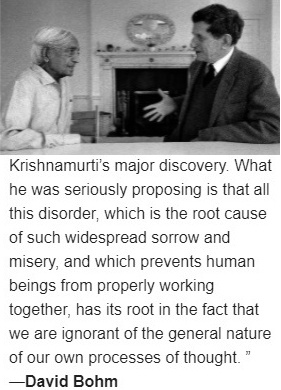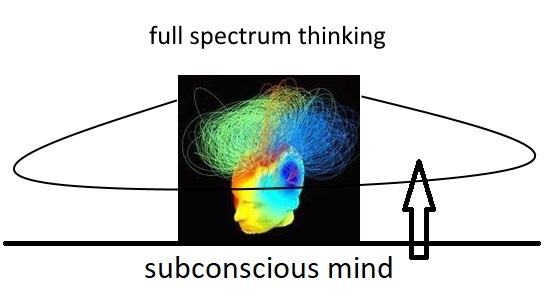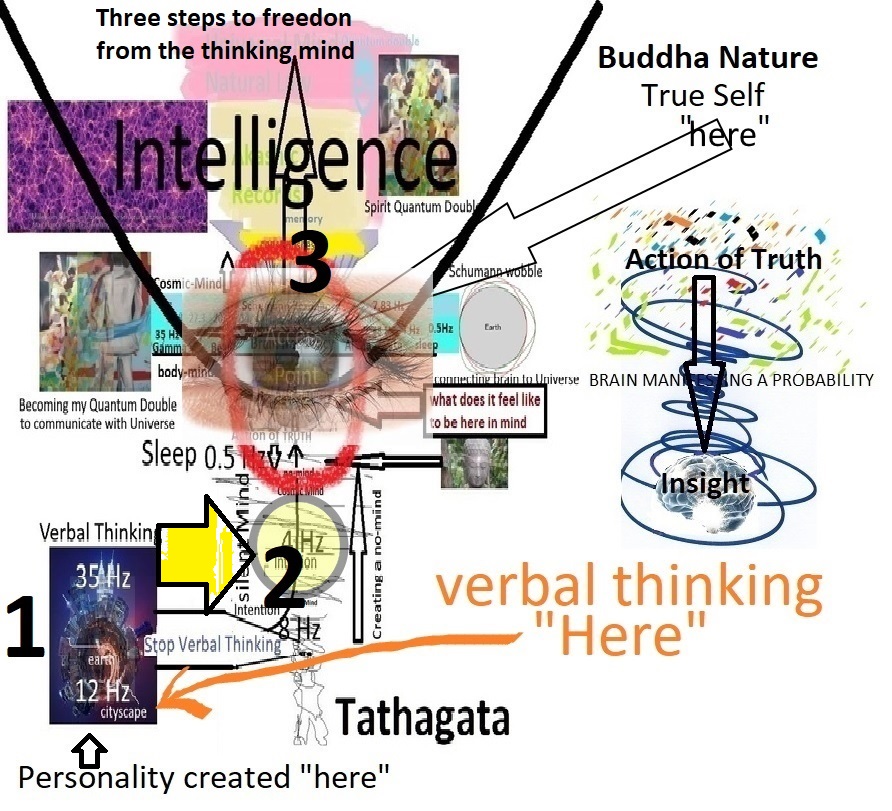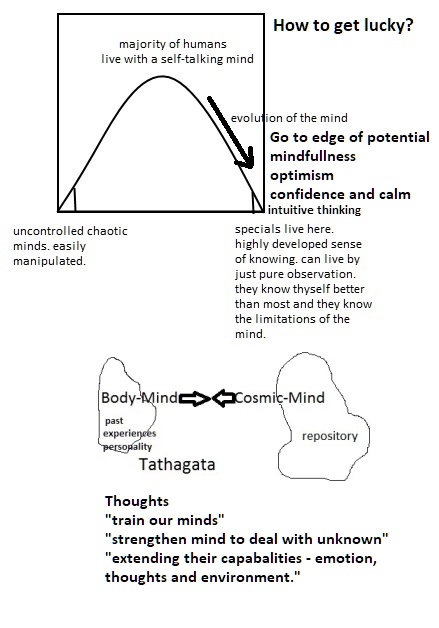The validity of the Road Map of the thinking mind?
How do I prove to you that what I am about to say is true or not?
You can try it out and see experientially if it is true or not but that is going to take time.
So to convince you by the time you read this article I am going to take 7 Truths by the thinker Jiddu Krishnamurti and then drop it into an introductory theory of the mind and see how chit chat philosophy or spirituality is really all about the mind and its mind spaces and if they are undiscovered to you or still to be experienced by you.
So this is a full-spectrum illustration of the thinking mind:
Road map of the thinking mind:
You have 3 mind spaces to explore:
The verbal thinking mind
The silent mind
The mind space where all thinking in the mind has stopped (Buddhism: sunyata)
So what are the 7 Truths from Jiddu Krishnamurti:
1. “It is no measure of health to be well adjusted to a profoundly sick society.”
Society is created by the verbal thinking mind. It is subjective in its process of thinking and also opinions and conditioning in the mind are all illusionary mental constructs and are not facts. We treat them as facts and use them to create society. So the structure of society we live in a reflection of our own minds.
2. “The more you know yourself, the more clarity there is. Self-knowledge has no end – you don’t come to achievement; you don’t come to a conclusion. It is an endless river.”
The baseline thinking process is this:
The verbal thinking mind
The silent mind
The mind space where all thinking in the mind has stopped.
We spend most of our time in the personality-driven frontline thinking mind. To experience all of one’s mind spaces is to achieve one full potential in the mind and to become a full-spectrum thinker. The more you know how the mind works then the better you can use it and hence create more clarity in the mind. Use the mind to your advantage and organise one’s thinking to the discovered mind spaces:
Always return to the centre after an action in mind. The centre is the mind at rest, in observation and no action in mind. Do not interact with pictorial thinking images, observe and let go. Verbal thinking has stopped. Mainly in the silent mind and pictorial thinking is under control. The ultimate no-mind state is just being in the presence of pure consciousness.
3. “The ability to observe without evaluating is the highest form of intelligence.”
In the silent mind, “Choiceless Observation”. Observe the mind and thoughts and do not interact or let verbal thinking take up a thought and spin it as in psychological thinking.
4. “Tradition becomes our security, and when the mind is secure it is in decay.”
To be free from the known in you. If you depend on the past in you or memory then forever you will be just working off an old pattern in your mind – conditioning. The “new” only come from “insight” and in the silent no-mind mind state. That is why it is always good to return to the centre when there is no action in mind, ready for an “insight” into whatever you are preoccupied with at the time.
5. “Die to everything of yesterday so that your mind is always fresh, always young, innocent, full of vigor and passion.”
One way you can always die to everything of yesterday is to remain in the no-mind state of mind when there is no action in mind. You don’t need to forget everything that is in memory and start from first principles all the time, yet the no-mind state of mind is an excellent place to be while waiting for an insight to come through. If one is preoccupied with memory and the past, then the new (insight) cannot show itself and hence forever stay in yesterday mode in mind.
6. “Freedom and love go together. Love is not a reaction. If I love you because you love me, that is mere trade, a thing to be bought in the market; it is not love. To love is not to ask anything in return, not even to feel that you are giving something – and it is only such love that can know freedom.”
Love in the verbal thinking mind is only a mental construct. You create it in mind as a trade-off for love from another. But true love and compassion only is, when the mind is in the presence of pure consciousness and where all thinking in the mind has stopped. In the “Buddha Nature” mind – when you come to it in mind you inhabit a space of compassion and love. It is not created by your mind when you are in the no-mind state of being in the presence of the universe and connected to it via consciousness.
7. “If you begin to understand what you are without trying to change it, then what you are undergoes a transformation.”
As you are now this instant, you have your verbal thinking mind and your silent mind at work. You probably do not realise these spaces in mind can exist separately on their own. It naturally does but you just haven’t realised. Bt the 3rd stage of the “Buddha Nature” mind where all thinking has stopped is not a mind space many have realised. This is where transformation takes place, to finally getting this mind space to work for you.
Transformation in the mind:




